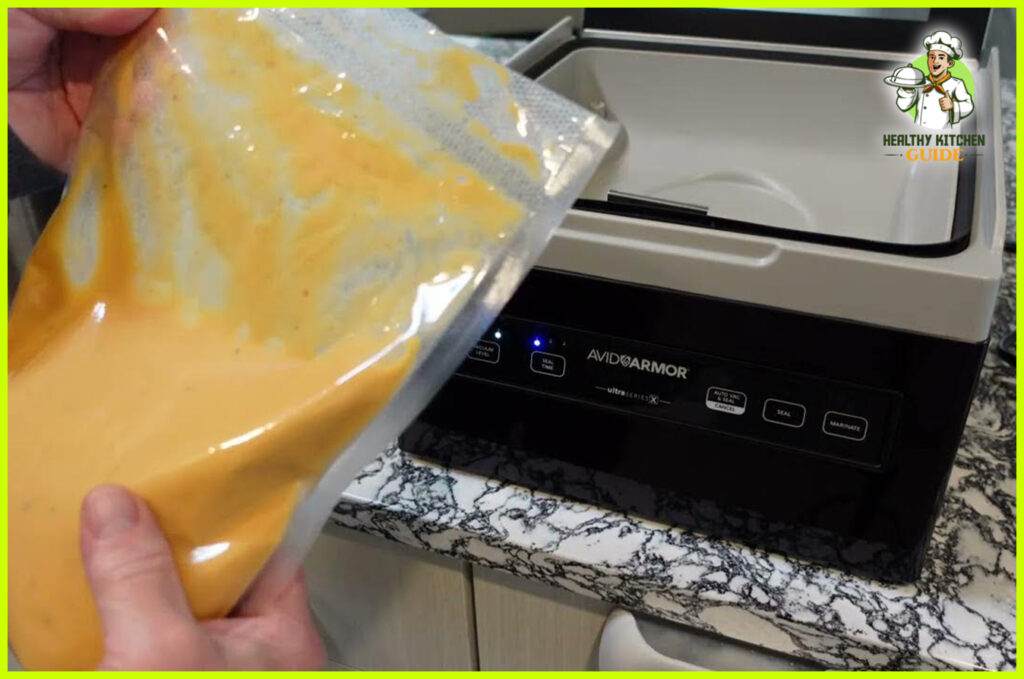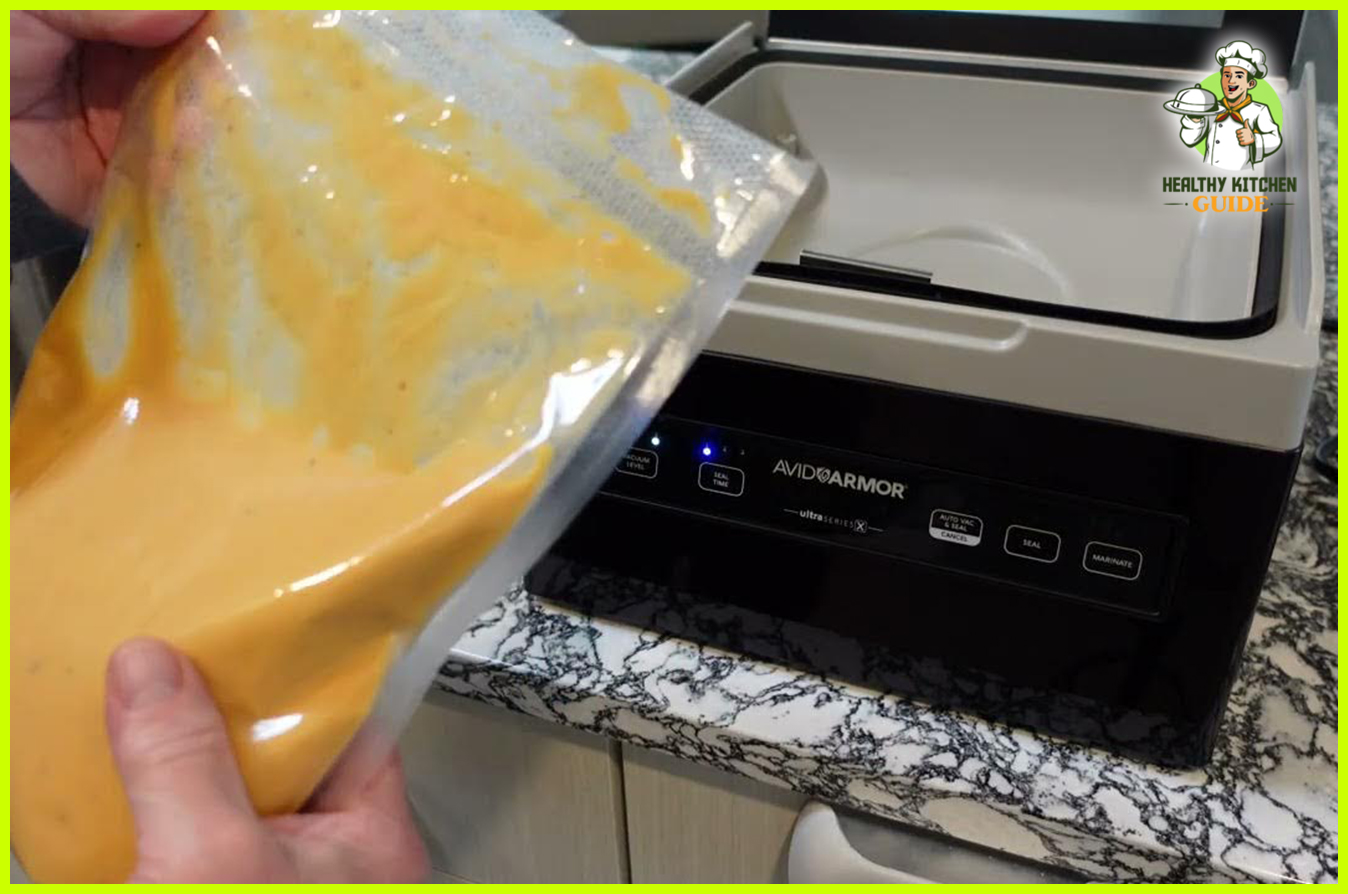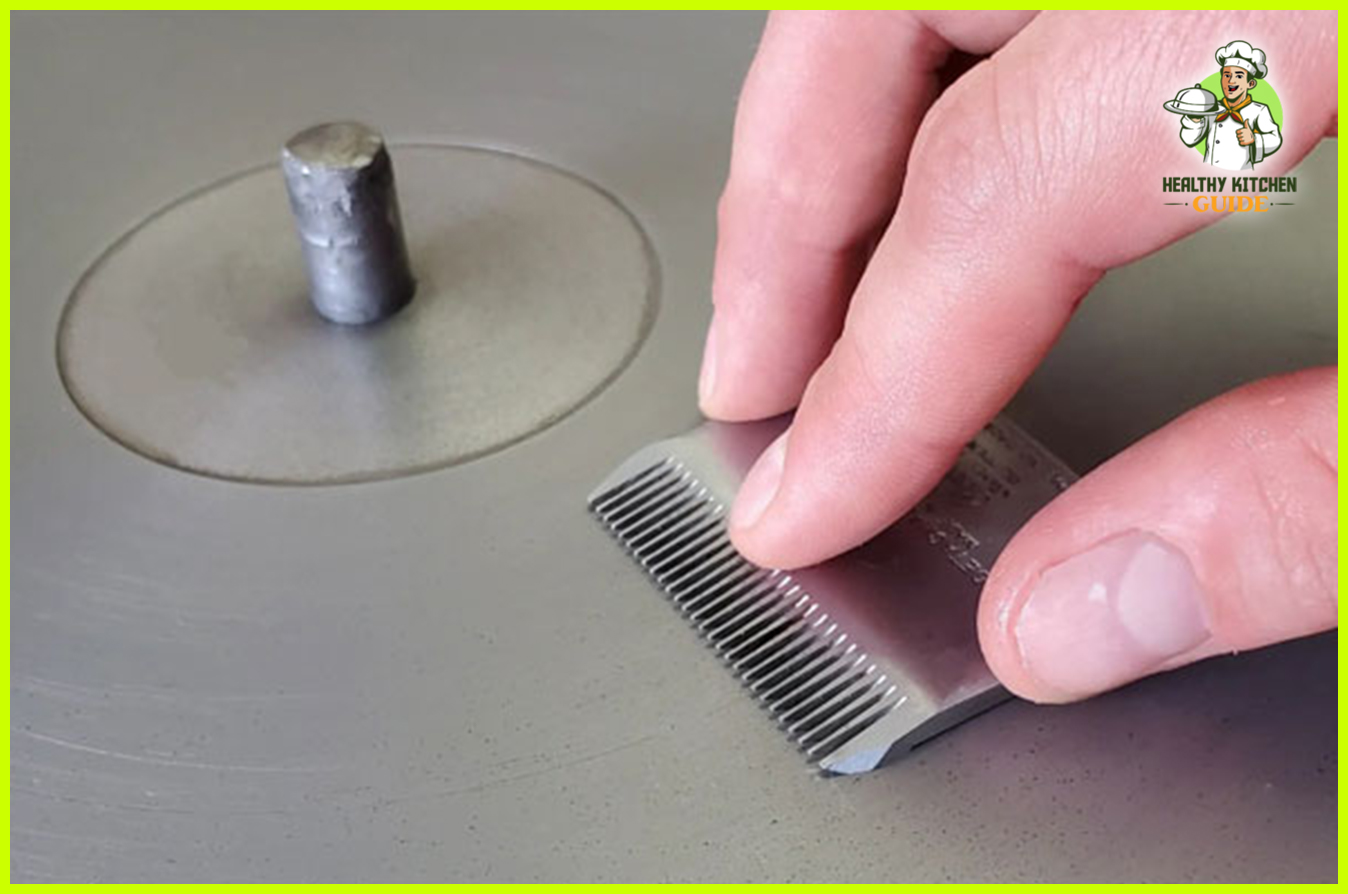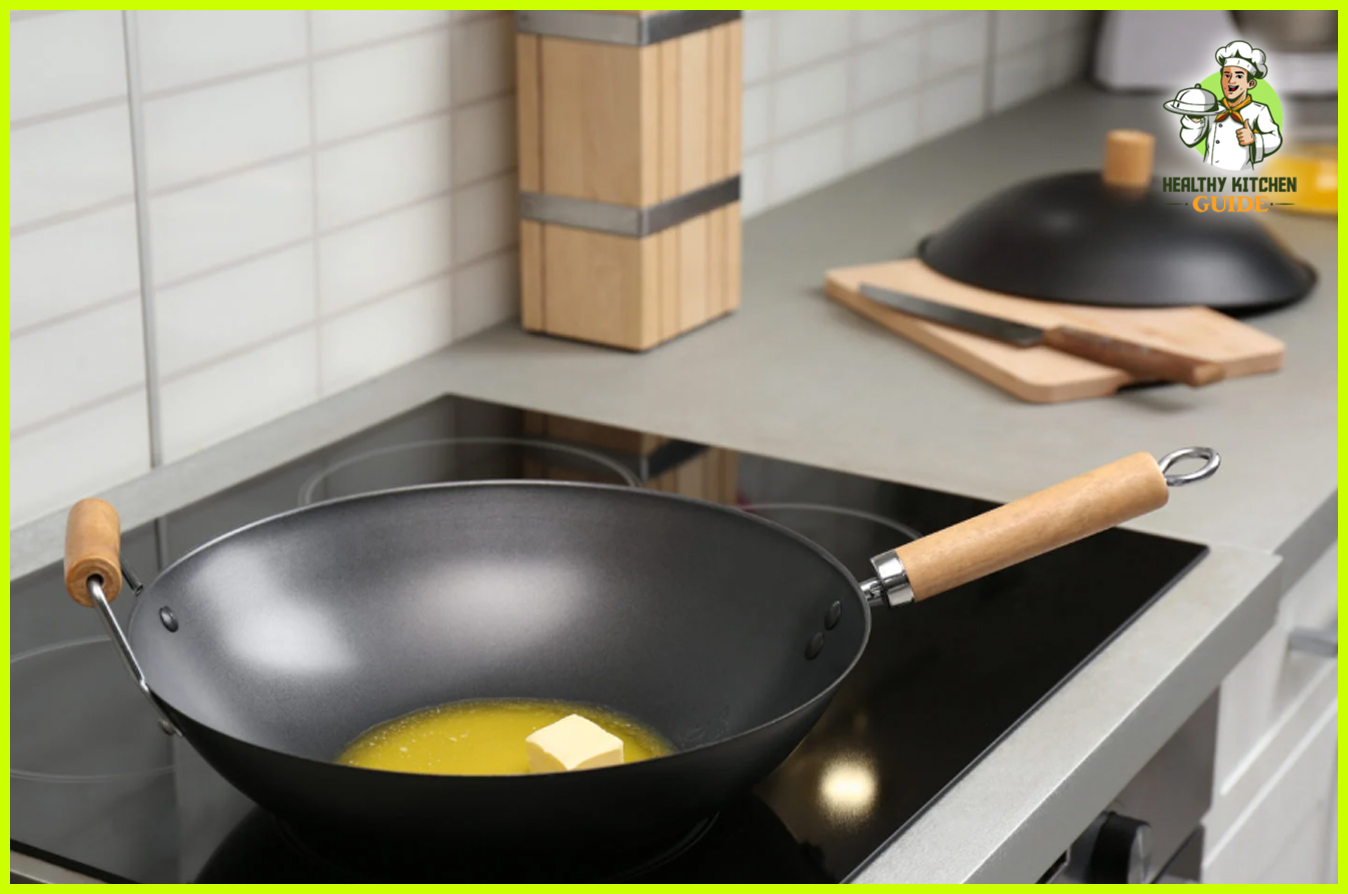To vacuum seal soup, pour the soup into a vacuum-sealable bag, leaving enough space at the top for expansion. Then, use a vacuum sealer to remove the air from the bag and seal it tightly.
Introducing the process of vacuum sealing soup is a practical way to preserve your delicious homemade soups for later use. Whether you want to stock up your freezer with convenient and ready-to-eat meals or prepare soup in advance for a camping trip, vacuum sealing is an efficient method.
By removing the air from the bags, you prevent freezer burn and oxidation, ensuring the soup stays fresh and flavorful for an extended period. We will guide you through the simple steps of vacuum-sealing soup, allowing you to enjoy your favorite recipes whenever you desire with minimal effort.
Ensuring Long-lasting Freshness
To ensure long-lasting freshness and preserve the taste of your soups, it is essential to vacuum seal them properly. Vacuum sealing not only helps extend the shelf life of soups but also prevents freezer burn and spoilage.
When vacuum-sealing soup, make sure it has cooled down completely before you start the process. This will help maintain the quality of the soup and prevent any bacterial growth.
Before sealing, divide the soup into portion-sized servings. This will make it easier to defrost only what you need without exposing the remaining soup to oxygen. Oxygen can lead to the growth of bacteria and cause the soup to spoil faster.
Using a vacuum sealer machine, place the soup bags carefully into the sealer. Make sure to leave some space at the top of the bag to prevent any leakage during the sealing process.
Once sealed, label each bag with the date and contents. This will help you keep track of the different soups in your freezer and ensure that you consume them before they go bad.
By following these steps, you can enjoy fresh and delicious soups for an extended period, without worrying about spoilage or freezer burn.
Step-by-step Guide To Vacuum Sealing Soup
Creating a vacuum seal for soup is a simple process that ensures its freshness and extends its shelf life. When vacuum sealing soup, it’s important to select the right container for sealing. Opt for containers that are specifically designed for vacuum sealing, such as vacuum-sealable bags or jars with compatible lids.
Prior to sealing, it is crucial to properly prepare the soup to ensure successful results. Ensure that the soup is completely cooled before vacuum sealing. Remove any excess air from the container as it can affect the quality of the seal. In addition, make sure to leave enough headspace to allow for expansion of the soup during the vacuum sealing process.
Using a vacuum sealer machine guarantees an airtight seal for your soup. Place the soup-filled container in the machine, making sure it is properly lined up. Activate the vacuum sealing process according to the instructions provided with your vacuum sealer.
For an effective seal, here are some insider tips: make sure the sealing area is clean and free from liquid or debris, ensure the sealing strip is aligned properly, and avoid overfilling the container. These tips will help maintain the quality and freshness of your vacuum-sealed soup for a longer period.
Retaining Nutritional Value
When vacuum-sealing soup, you can retain its nutritional value by preserving the vital nutrients and flavors. Vacuum sealing removes excess air and prevents oxidation, keeping the soup fresh for longer periods. This method helps maintain the quality and taste of your homemade soup.
When vacuum sealing soup, it is important to consider how to effectively preserve the nutritional value of the ingredients. The key is to lock in the vitamins and minerals while also ensuring that the flavor and texture of the soup are maintained.
One way to retain the nutritional value of the soup is to freeze it before vacuum sealing. Freezing helps to preserve the vitamins and minerals by slowing down the rate of oxidation. By vacuum sealing the already frozen soup, you prevent any further nutrient loss.
Another important factor to consider is the method of cooking the soup. Minimizing the cooking time and using gentle heat can help to reduce nutrient loss. Vegetables should be lightly cooked to preserve their vitamins and minerals.
| Preserving Flavor and Texture |
|---|
| Avoiding excessive exposure to air is crucial in maintaining the flavor and texture of the soup. When vacuum sealing, make sure to remove any excess air from the packaging to prevent spoilage and freezer burn. |
| Labeling and dating the vacuum-sealed soups can help you keep track of the freshness. Storing the soups in a cool, dark place, such as a freezer, can further preserve their quality. |
| By following these tips, you can enjoy the convenience of prepared soup while ensuring that the nutritional value, flavor, and texture are preserved. |
Efficient Meal Planning And Storage
Discover how to efficiently vacuum seal soup for meal planning and storage, ensuring its freshness and long-term preservation.
Maximizing Storage Space
Vacuum-sealing soup is an effective method to preserve its freshness and extend its shelf life. By removing air and sealing the bag tightly, you can prevent freezer burn and keep your soup tasting delicious for longer periods. One key advantage of vacuum sealing soup is maximizing storage space. Instead of storing bulky containers, you can compress the soup into flat bags, making it easier to stack and organize in the freezer or pantry. This not only frees up valuable space but also allows for efficient meal planning and portion control. With vacuum-sealed bags, you can conveniently prepare individual servings of soup, making it convenient to grab and reheat whenever needed. Just make sure to label each bag with the soup type and date for easy identification. Enjoy the benefits of vacuum sealing your soup by saving space, minimizing food waste, and having quick and easy meals always at hand.
Freezing And Thawing Procedures
To properly vacuum seal soup for freezing, you must follow the correct procedures for both freezing and thawing. When freezing soup, it is crucial to use proper techniques to ensure the soup remains fresh and safe to consume. Firstly, ensure the soup is completely cooled before sealing it in vacuum seal bags or containers. This helps to prevent the growth of bacteria during the freezing process. Secondly, fill the bags or containers with the soup, leaving some room at the top for expansion. Be sure to remove any excess air from the bags or containers to minimize the risk of freezer burn. Once sealed, label the bags or containers with the date and type of soup.
When it comes to thawing soup safely, it is important to do so in a controlled manner. The best method is to thaw the soup in the refrigerator overnight. This gradual thawing process helps to maintain the quality and integrity of the soup. Avoid thawing soup at room temperature as it can promote bacterial growth. If you are short on time, you can also use the defrost function on your microwave, but be sure to follow the manufacturer’s instructions. Remember to transfer the thawed soup to a pot and heat it thoroughly before serving.
Avoiding Common Mistakes
One of the common mistakes to avoid when vacuum sealing soup is overfilling the containers. It is important to leave enough space for the soup to expand as it freezes. Overfilled containers can burst or leak during the sealing process, causing a mess and potential damage. To prevent this, only fill the containers up to the recommended level, leaving enough room for expansion.
Another mistake is not removing air properly. Air pockets can lead to freezer burn and affect the quality and taste of the soup. Before sealing the containers, make sure to remove as much air as possible. This can be done by using a vacuum sealer that has an air removal feature or manually by pressing out the air from the bag or container.
By avoiding these common mistakes, you can vacuum seal your soup effectively, ensuring its freshness and longevity in the freezer.
Selecting The Right Vacuum Sealer
Selecting the right vacuum sealer is essential for achieving optimal results when vacuum-sealing soup. When it comes to choosing a vacuum sealer, there are two primary considerations to keep in mind—budget and features.
First, the budget plays a crucial role in the decision-making process. Determine how much you are willing to spend on a vacuum sealer and stick to that budget. Take into account the long-term benefits and cost savings that vacuum sealing can bring to your soup storage.
Second, features vary among different vacuum sealers on the market. Evaluate the features that are important to you. For example, consider if you require an automatic sealing function, adjustable seal levels, or extra-wide sealing strips. Additionally, compare different types of vacuum sealers, such as handheld sealers, chamber sealers, or external sealers, to identify which one aligns best with your needs.
By carefully considering your budget and the features that matter most to you, you can select the right vacuum sealer that will effectively seal your soup for long-term storage.
Final Thoughts
Vacuum-sealing soup is the ultimate way to preserve its freshness and enhance convenience. By vacuum sealing, you create an airtight seal that prevents oxygen from coming into contact with the soup, thereby reducing the risk of spoilage. This method is particularly useful for individuals who enjoy batch cooking or making large quantities of soup, as it allows you to portion the soup into individual servings and store them for later use.
When vacuum sealing soup, it is essential to allow the soup to cool completely before packaging it. This ensures that condensation does not form inside the vacuum-sealed bag, which could lead to bacterial growth. Additionally, labeling each package with the date and type of soup is recommended, making it easier to keep track of your inventory and enjoy the soup within its recommended shelf life.
Vacuum-sealing soup not only helps to reduce food waste, but it also saves time and money. With vacuum-sealed soup portions readily available in your freezer, you can quickly and easily defrost and heat up a homemade meal whenever you need it. So why let your soup go to waste? Invest in a vacuum sealer and start enjoying the benefits of fresh and convenient soup all year round.
Frequently Asked Questions For How To Vacuum Seal Soup

Can You Vacuum Bag Soup?
Yes, you can vacuum bag soup to extend its shelf life and retain its freshness. By removing air from the bag, you can prevent spoilage and freezer burn.
What Foods Should Not Be Vacuum Sealed?
Avoid vacuum-sealing foods with high moisture content like fresh mushrooms, garlic, and soft cheeses. Also, delicate and crispy items such as lettuce, bread, and chips should not be vacuum sealed. These foods require special storage to maintain their quality and texture.
How Do You Vacuum Seal Juicy Food?
To vacuum-seal juicy food, follow these steps: Place the food in a vacuum-sealable bag or container. Make sure the food is not too wet to avoid leakage. Use a vacuum sealer machine to remove the air from the bag or container.
Seal it tightly to prevent any air from entering. Store the vacuum-sealed food in the refrigerator or freezer for a longer shelf life.
How Does Vacuum Sealing Soup Work?
Vacuum-sealing soup removes air from the container, preventing bacterial growth and spoilage, and extending its shelf life.
Is It Safe To Vacuum Seal Hot Soup?
It is not recommended to vacuum seal hot soup as the high temperature and steam can cause the container to burst.
Can You Vacuum Seal Soup Containing Vegetables?
Yes, you can vacuum-seal soup with vegetables. However, blanching the vegetables before sealing can help retain their texture and flavors.
How Long Does Vacuum-sealed Soup Last In The Fridge?
When properly vacuum-sealed, soup can last up to 5-7 days in the refrigerator, maintaining its freshness and taste.
Conclusion
Vacuum-sealing soup is a simple and effective way to preserve its freshness and flavor for longer durations. By following the step-by-step guide mentioned in this post, you can ensure that your soup stays delicious and free from spoilage. Whether you’re meal-prepping or looking to store leftovers, vacuum sealing is a convenient technique that can greatly enhance your soup’s shelf life.
So why wait? Start vacuum sealing your soup today and enjoy its scrumptious taste whenever you crave it.





Leave a Reply